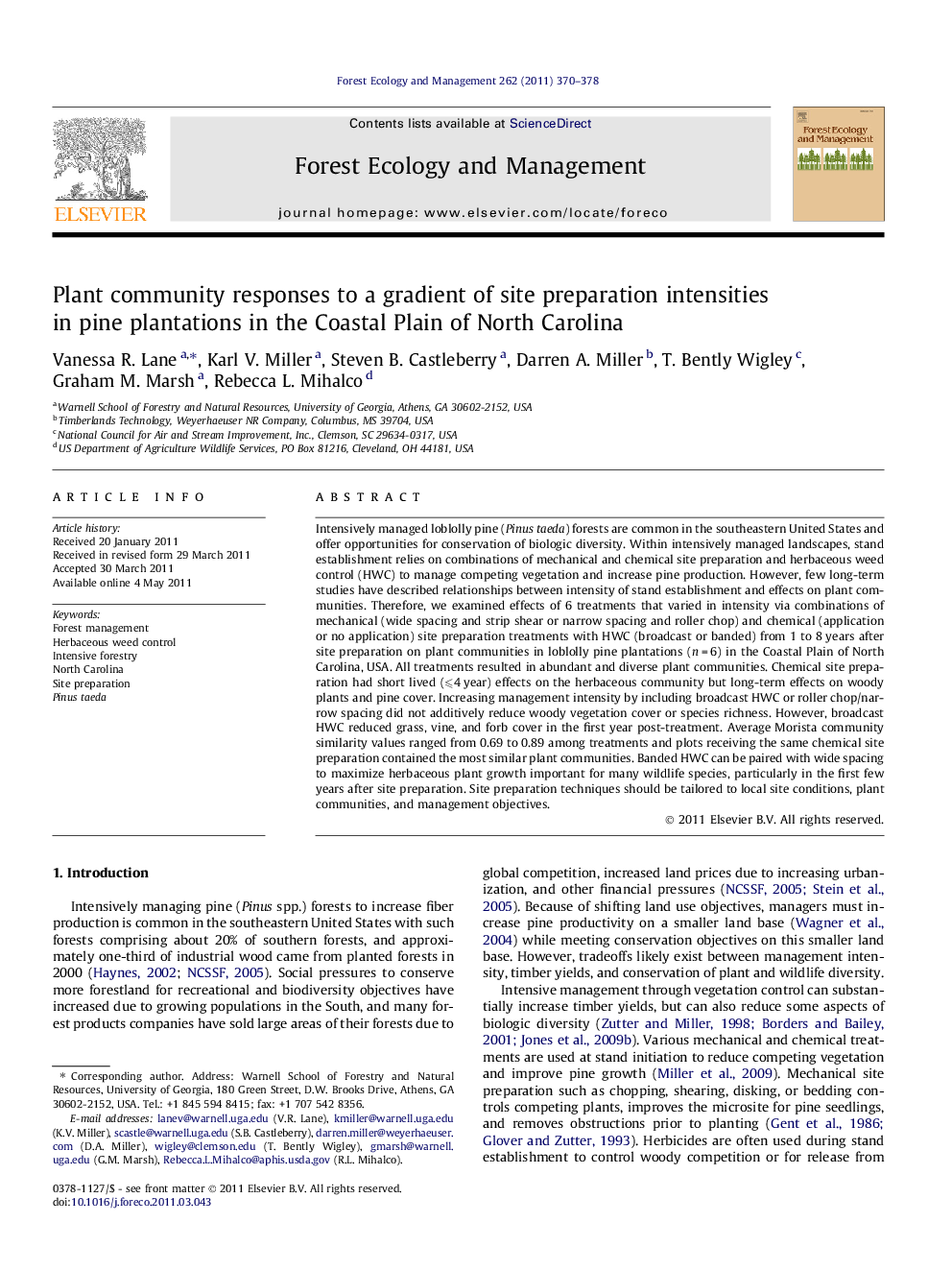| Article ID | Journal | Published Year | Pages | File Type |
|---|---|---|---|---|
| 87511 | Forest Ecology and Management | 2011 | 9 Pages |
Intensively managed loblolly pine (Pinus taeda) forests are common in the southeastern United States and offer opportunities for conservation of biologic diversity. Within intensively managed landscapes, stand establishment relies on combinations of mechanical and chemical site preparation and herbaceous weed control (HWC) to manage competing vegetation and increase pine production. However, few long-term studies have described relationships between intensity of stand establishment and effects on plant communities. Therefore, we examined effects of 6 treatments that varied in intensity via combinations of mechanical (wide spacing and strip shear or narrow spacing and roller chop) and chemical (application or no application) site preparation treatments with HWC (broadcast or banded) from 1 to 8 years after site preparation on plant communities in loblolly pine plantations (n = 6) in the Coastal Plain of North Carolina, USA. All treatments resulted in abundant and diverse plant communities. Chemical site preparation had short lived (⩽4 year) effects on the herbaceous community but long-term effects on woody plants and pine cover. Increasing management intensity by including broadcast HWC or roller chop/narrow spacing did not additively reduce woody vegetation cover or species richness. However, broadcast HWC reduced grass, vine, and forb cover in the first year post-treatment. Average Morista community similarity values ranged from 0.69 to 0.89 among treatments and plots receiving the same chemical site preparation contained the most similar plant communities. Banded HWC can be paired with wide spacing to maximize herbaceous plant growth important for many wildlife species, particularly in the first few years after site preparation. Site preparation techniques should be tailored to local site conditions, plant communities, and management objectives.
► We examined plant responses to increasing management intensity for 1–8 years. ► Treatments included spacing, mechanical and chemical site preparation, and release. ► Treatments had short lived (⩽4 years) effects on grasses, vines, and forbs. ► Chemical site preparation reduced non-pine woody plants in all 8 years. ► All treatments had diverse communities; no species were excluded by treatment.
